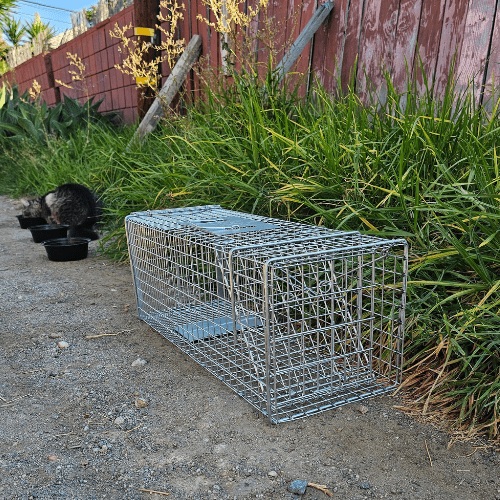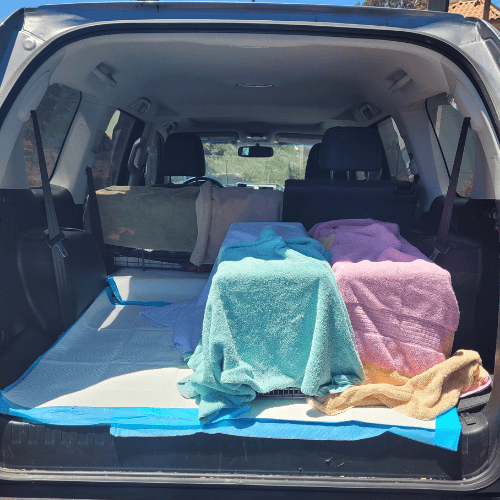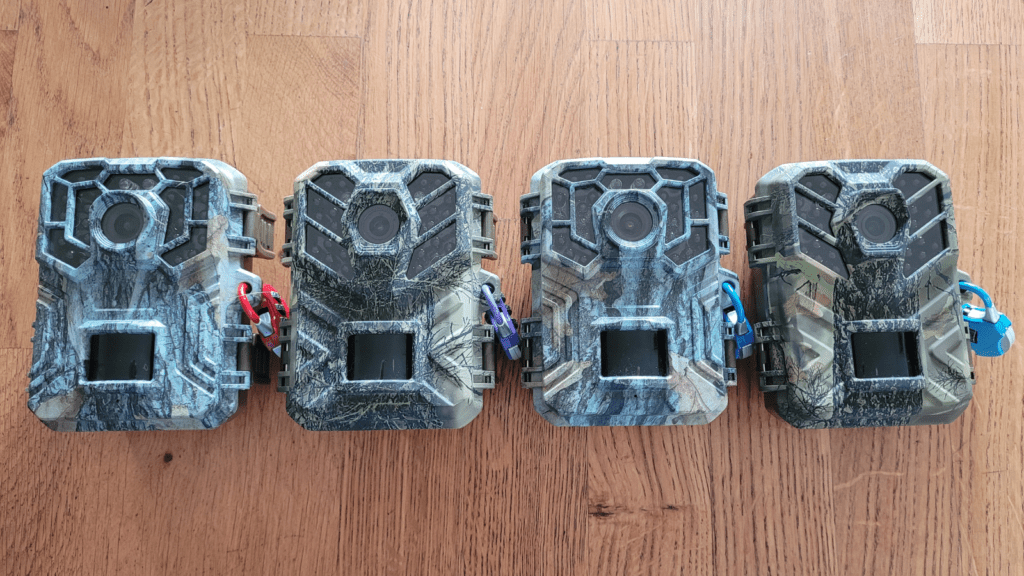
How To Trap A Cat – Cat Trapping Guide
Are you struggling to trap a feral cat, a stray cat, or even your own pet? It can be a daunting task, especially if you’re not equipped with the proper techniques and knowledge. But don’t worry – our definitive cat trapping guide is here to teach you how to trap a cat easily!
We understand that trapping a cat can be a sensitive topic, which is why we prioritize the well-being of the feline throughout the process. Our step-by-step instructions and practical tips ensure a humane and effective capture of your target cat.
Whether you’re a concerned citizen looking to manage a feral cat population or a pet owner trying to catch your missing cat, we’ve got you covered. Let’s dive into our comprehensive cat trapping guide and equip you with the necessary tools to safely trap any cat.
Key Takeaways:
- Trapping a cat requires understanding their behavior and taking necessary safety precautions.
- There are different types of traps available, spring-loaded, gravity, and drop traps.
- Baiting the trap correctly is crucial for success.
- Handling and releasing the trapped cat should be done with care and respect for their welfare.
- Trap-neuter-return (TNR) programs play a significant role in managing feral and stray cat populations.
Understanding Cat Behavior and Safety Precautions
In this section, we’ll share important information about cat behavior and safety measures you need to take when trapping cats – especially when trapping feral or stray cats. Understanding and following these crucial steps will help make the cat-trapping process safe and much easier.
Identifying Feral and Stray Cats
Feral and stray cats are not the same thing. Stray cats may have been owned by someone, but they have either been lost or abandoned. Feral cats, on the other hand, have never been socialized and are often too afraid of humans to get close to them. When trapping a cat, it’s important to know whether it’s feral or stray, as this will affect how you approach the cat and how you handle it.
When dealing with a feral skittish cat for TNR (trap, neuter, return), it’s important to follow all the proper steps because cats in feral cat colonies may be more cautious of traps. Stray cats, on the other hand, may be more easygoing and may even approach humans or even enter a trap or cat carrier simply by putting down canned cat food.

Taking Safety Precautions
Before you begin trapping a wild animal, you must always take safety precautions to protect yourself and the cat during the process. Here are some tips:
- Don’t corner, approach, or try to touch a frightened cat unless you have feral cat gloves. Some feral cats carry diseases, and if you get scratched or bitten, you might need to seek medical attention.
- Handle the cat trap gently, and never pick it up or shake it when there’s a cat inside.
- Never leave a trapped cat unattended. Always count how many traps you leave and keep an eye on them at all times.
- Make sure to check your local laws and regulations regarding trapping a stray or feral cat. Some areas may require permits or have specific rules to follow for animal control.
- Once you catch a cat, here are some tips to help you tame a feral cat!
Gauging Cat Comfort Levels
When trapping a cat, it’s important to gauge its comfort level with humans. If the cat is feral, it won’t feel comfortable around humans, and it may require a different approach to trap it safely. If the cat is a stray or a lost pet, it may be more receptive to human interaction, making it easier to trap.
Additionally, knowing the cat’s comfort level can help you determine the type of bait you’ll use and where to set up the trap. For example, feral cats will likely not be attracted to cat food or other typical bait, so you may need to use something different to catch their attention. You may also need to withhold food to make the cat hungry to be brave enough to enter the trap door.

Tip: Take time to observe the cat’s behavior before you start to trap it. Look for where it sleeps, what it eats, and when it’s most active so that you can plan your trapping strategy accordingly.
Types of Traps and Equipment Needed
When it comes to cat trapping, choosing the right humane traps and equipment is crucial to ensure a successful capture. There are several different types of traps available on the market, including live traps, box traps, and drop traps. Here’s our list of the best cat traps for TNR or cat rescue situations.
Drop traps are particularly effective for trapping feral cats, multiple cats, or a mother cat and her kittens, as they allow the cats to be trapped from a distance manually by pulling a trigger wire.
When selecting a trap, consider the size of the cat you’re attempting to catch and the location where the trap will be set up. Live traps are typically used for smaller cats, while larger cats may require a sturdier box trap. A regular box trap has a trip plate and drops the trap door opening, trapping the cat inside.
In addition to the trap itself, there are several essential pieces of equipment you’ll need for a successful cat-trapping experience, including:
| Equipment | Description |
|---|---|
| Bait | The type of bait you use will depend on the cat’s preferences, but common options include canned tuna, sardines, and wet cat food. If those don’t work, you can try natural jarred baby food, cooked chicken, or your favorite dry food. |
| Newspaper or towels | Placing a newspaper or towel inside on the trap floor can help absorb any messes the cat may make during trapping. Covering the trap floor can also help disguise the trap for a shy cat. |
| Feral Gloves | Wearing gloves can protect your hands from scratches or bites during the trapping process. These are usually not needed unless you plan to handle ferals. |
| Trap Covers | A cover for the trap can help calm the cat and provide an added layer of safety during transportation. You can cover the trap with a towel or blanket, but be sure to leave the entrance of the trap clear of the towel, which can prevent the trap door closing. |
| Cameras | Sometimes a trail camera or pet camera with wifi can help you identify and understand the cat’s behaviors. Some cats roam a wide radius and may only come by the same location a few times a week. You’ll save time on trapping day if you know when the cat might arrive. |
By investing in the right type of trap and equipment, you can increase your chances of successfully trapping the cat the first time and doing so without any issues.
Baiting and Setting up the Trap
Now that you have chosen the right trap for the job, it’s time to set it up and bait it correctly. Remember, trapping cats should always be done safely and humanely.
Choosing the Right Bait
When it comes to baiting a cat trap, it’s important to choose something that will entice the cat without causing harm. Strong-smelling, wet cat food is a popular choice, as well as tuna, sardines, or chicken. Avoid using raw meat or fish, as this can attract unwanted wildlife and may spoil quickly in warm weather.
Setting Up the Trap
When setting up your trap, it’s important to place it in a strategic location. For feral cats, this may be near their regular feeding spot. For most cats, try placing the trap in a quiet area away from busy roads. Make sure the trap is placed on level ground, and stabilize it next to a fence, bush, or rocks if necessary.
When setting the trap, make sure the front door is securely latched open. This will help the cat feel comfortable entering the trap. Place the bait at the back of the trap, ensuring it triggers the trap mechanism when the cat steps on the pressure plate.

It’s important to check the trap regularly, and ideally, you’ll keep the live trap within sight. Never leave traps unattended for an extended period of time.
Tip: Covering the trap with a towel or blanket can help the cat feel more secure and reduce stress during the trapping process.
Here’s our Tru Catch Guide and our Tomahawk Guide to help you use your specific traps.
If you’re having trouble trapping a specific cat, check out our other resources about how to catch a very difficult cat.
Capturing, Transporting, and Releasing the Cat
Now that the cat is safely trapped, it’s important to handle the situation with care. The first step is to quickly cover the entire trap so that the cat begins to calm down.
Never open the trap unless you’re in an enclosed space! Even a mild cat may try to bolt as soon as the trap is opened. Get a trap divider if you plan to place food inside the trap door or open the rear door.
If you’re trapping a feral cat, remember that they are not used to human contact, so keep any interaction to a minimum. Many cats don’t like being in a confined space, so it’s best to keep the trap covered and in a warm, dry, quiet space until you can release the cat.

It’s important to consider the long-term welfare of feral and stray cats. One effective method is trap-neuter-return (TNR). TNR involves spaying/neutering cats, vaccinating them, and then returning them to their original location. This prevents further breeding and reduces the number of cats in the area.
TNR programs are the most humane and effective method for managing feral and stray cat populations. By spaying/neutering and vaccinating cats, we can significantly improve their quality of life and reduce the burden on overcrowded shelters.
If there are no TNR programs in your area, consider starting one. Connect with local animal welfare organizations and resources to learn how you can make a difference in the lives of feral and stray cats in your neighborhood.
Conclusion
We hope this cat trapping guide has provided you with valuable insights and techniques to trap cats safely and effectively. Remember, trapping cats should always be done with compassion and respect for their well-being.
Takeaways
By prioritizing the cat’s safety and considering their unique behaviors, you can successfully trap feral, stray, or even your own pet cat. It’s important to choose the right trap and equipment, bait the trap correctly, and safely handle the cat once it’s captured.
Remember, trap-neuter-return (TNR) programs can make a significant difference in managing feral cat populations and reducing animal suffering. By participating in TNR, you help ensure the long-term health and well-being of feral and stray cats.
Thank you for reading our cat trapping guide. With the knowledge and techniques outlined in this article, we believe you can confidently manage a variety of cat-trapping scenarios. Happy trapping!
Cat Trapping FAQs
How do I choose the right trap for cat trapping?
When selecting a trap, consider the size of the cat, the trapping environment, and the specific trapping objective. A humane box trap is suitable for most situations, while a drop trap may be more effective for feral cats.
What bait should I use to attract cats to the trap?
The best bait for cat trapping is strong-smelling food that cats find irresistible, such as canned tuna or sardines. Avoid using anything toxic or harmful to cats.
How long should I leave the trap set before checking it?
Never leave a trap unattended. If you set a feeding schedule, you should be able to lure the cat into the trap during feeding time. If you have to leave a trap out, place a sign on it and a trail camera. It’s also important to check the traps as soon as you can and never leave a trap out for longer than 12 hours.
How do I transport a trapped cat safely?
Handle the trapped cat calmly and securely. Use gloves and a carrier or transfer cage to prevent escape or injury. Keep the cat confined while transporting them, and never open a trap or carrier until you are in an enclosed safe space.
What is trap-neuter-return (TNR), and why is it important?
TNR is a humane method to manage feral cat populations. It involves trapping feral cats, having them spayed or neutered by a veterinarian, and then returning them to their original habitat. TNR helps prevent overpopulation and improve the cats’ quality of life.
What should I do if I accidentally trap someone’s pet cat?
If you trap someone’s pet cat by mistake, promptly release the cat and notify the owner. Apologize for any inconvenience caused and ensure the owner that it was an unintentional event. Here are some tips for talking to neighbors about TNR and community cats.



